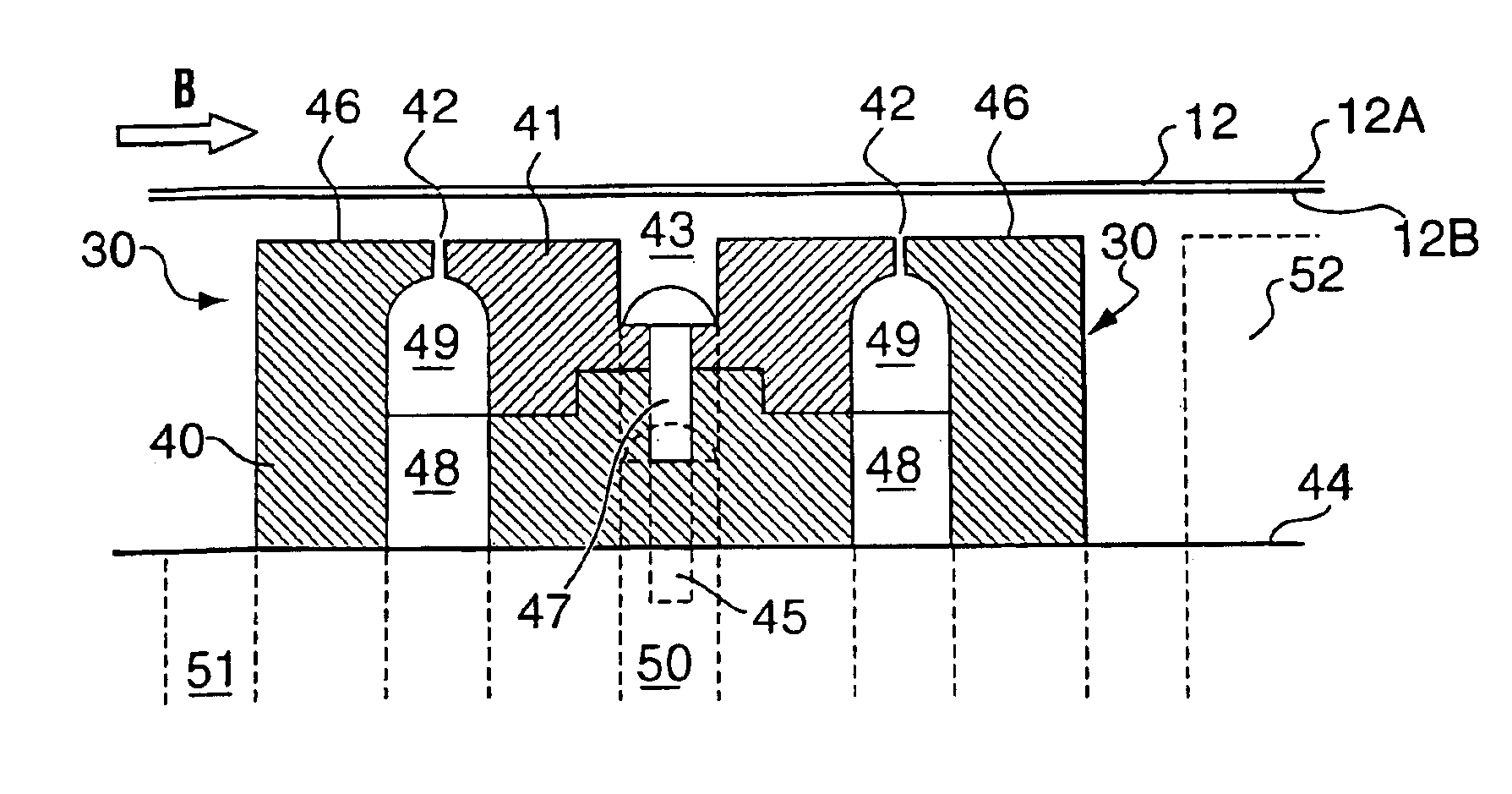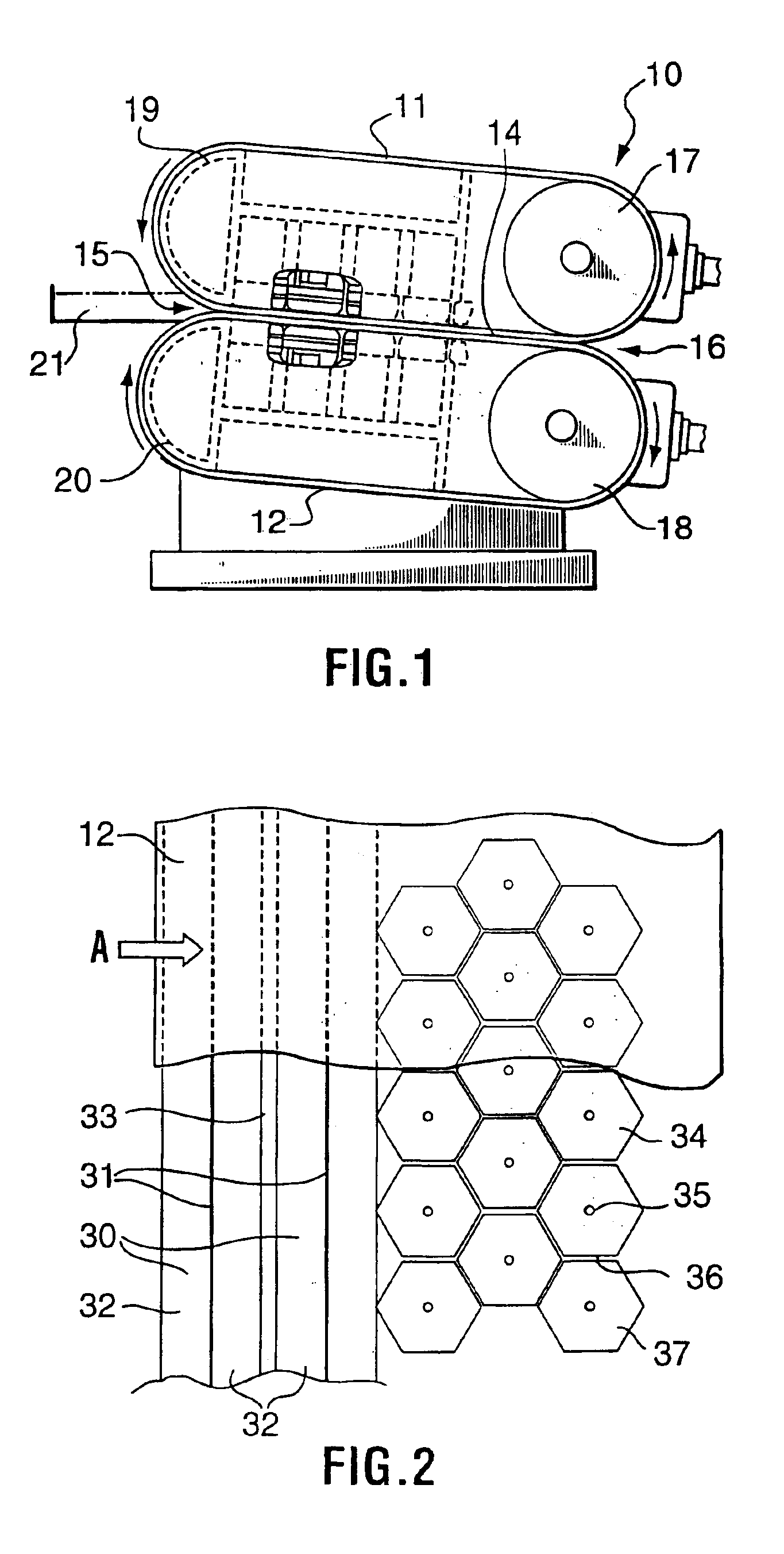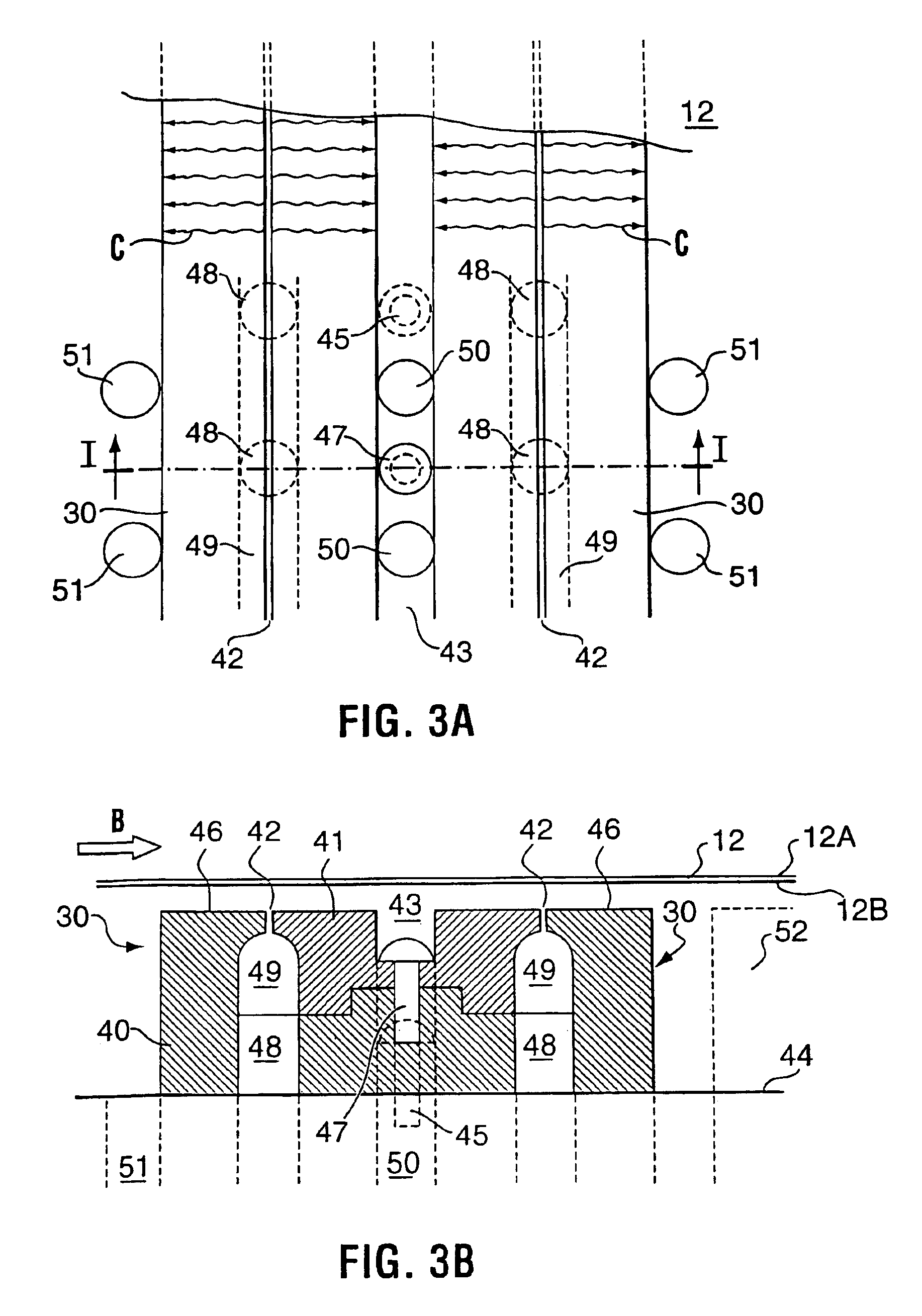Belt-cooling and guiding means for continuous belt casting of metal strip
a technology of belt cooling and guiding means, which is applied in the field of belt cooling and guiding of casting belts, can solve the problems of more controlled casting conditions and difficult to achieve the effect of casting
- Summary
- Abstract
- Description
- Claims
- Application Information
AI Technical Summary
Benefits of technology
Problems solved by technology
Method used
Image
Examples
Embodiment Construction
[0035]Referring to the accompanying drawings, an example of a belt casting machine 10 is shown in simplified form in FIG. 1. The machine 10 incorporates a pair of rotatable, resiliently flexible, heat-conducting casting belts, being upper and lower endless belts 11 and 12, which are arranged to travel in oval or otherwise looped paths in the directions of the arrows, so that in traversing a region where they are facing each other, optionally moving with a small degree of downward slope, the belts define a casting mold 14 extending from a molten metal entrance 15 to a solidified strip article discharge outlet 16. After passing through the casting mold and emerging from the outlet 16, the belts 11 and 12 are rotated around and driven by large driving rollers 17 and 18, to return to the entrance 15 after passing around curved guiding structures 19 and 20 (referred to as hover bearings). The driving rollers 17 and 18 are connected to suitable motor drives (not shown).
[0036]Molten metal ...
PUM
| Property | Measurement | Unit |
|---|---|---|
| width | aaaaa | aaaaa |
| thickness | aaaaa | aaaaa |
| width | aaaaa | aaaaa |
Abstract
Description
Claims
Application Information
 Login to View More
Login to View More - R&D
- Intellectual Property
- Life Sciences
- Materials
- Tech Scout
- Unparalleled Data Quality
- Higher Quality Content
- 60% Fewer Hallucinations
Browse by: Latest US Patents, China's latest patents, Technical Efficacy Thesaurus, Application Domain, Technology Topic, Popular Technical Reports.
© 2025 PatSnap. All rights reserved.Legal|Privacy policy|Modern Slavery Act Transparency Statement|Sitemap|About US| Contact US: help@patsnap.com



